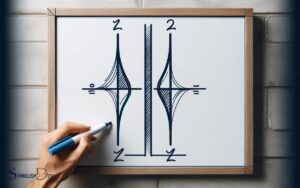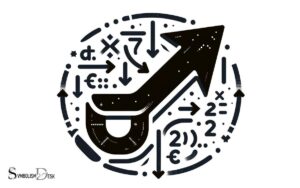Symbol for an Angle in Math: Greek Letter!
In mathematics, an angle is typically denoted by a lowercase Greek letter such as α (alpha), β (beta), γ (gamma), or θ (theta).
An angle is a geometric figure formed by two rays (the sides of the angle) sharing a common endpoint (the vertex of the angle). To indicate an angle in mathematical notation, symbols are used for convenience and clarity.
The most common symbol for an angle is the Greek letter theta (θ), but other Greek letters like alpha (α), beta (β), and gamma (γ) are also frequently used. The choice of symbol depends on the context and the number of angles being discussed in a problem.
For example:
- ∠ABC: Represents an angle with the vertex at point B, between points A and C.
- ∠θ: Uses the Greek letter theta to represent an angle.
This notation allows mathematicians and students to refer to angles concisely and precisely within equations and diagrams.
Representing angles with Greek letters like θ streamlines mathematical communication, allowing for concise expressions of geometric principles.

Key Takeaway
The Importance of Angle Symbols
The importance of angle symbols lies in their ability to succinctly and precisely represent the measurement of an angle in mathematical expressions.
In geometry and trigonometry, angles are fundamental elements, and their accurate representation is crucial for conveying mathematical concepts effectively.
The symbol for an angle provides a standardized and universally recognized way to denote the size of an angle, facilitating clear communication and interpretation of mathematical relationships.
By using angle symbols, mathematicians and students can express angular measurements consistently, enabling seamless comprehension of geometric theorems, trigonometric functions, and algebraic equations.
This uniformity in notation also streamlines the process of solving mathematical problems involving angles, promoting accuracy and coherence in mathematical discourse.
Therefore, understanding and utilizing angle symbols are integral to the precise articulation and manipulation of angle measurements in various mathematical contexts.
Evolution of Angle Notation
During the development of mathematical notation, the representation of angles underwent significant evolution to enhance clarity and precision in geometric and trigonometric calculations.
This evolution included:
- The use of three-letter symbols (e.g., ABC) to denote angles.
- The introduction of the degree symbol (°) by the Babylonians.
- The adoption of the radian as a standard unit of angular measurement.
- The incorporation of trigonometric functions and their respective notations (e.g., sin, cos, tan) to express angles in calculations.
This evolution in angle notation reflects the progression of mathematical language to accommodate the increasing complexity of geometric and trigonometric concepts.
Understanding this historical development provides valuable insights into the symbols used in modern mathematics to represent angles.
Angle Symbols in Geometry
As we explore the realm of geometry, it is imperative to understand the diverse symbols employed to represent angles in mathematical contexts.
In geometry, angles are commonly denoted using the symbol ∠, followed by three points that specify the angle’s vertex, such as ∠ABC.
This notation indicates the angle formed by the points A, B, and C, with point B as the vertex. Additionally, Greek letters are often used to represent specific angles, with α (alpha), β (beta), γ (gamma), θ (theta), and φ (phi) being some of the commonly employed symbols.
Furthermore, angles can also be represented using three letters with a smaller angle symbol, such as ∠BAC, indicating the angle at point A. Understanding these symbols is fundamental for effectively communicating and solving geometric problems.
Angle Representation in Trigonometry
In geometry, angles are represented using specific symbols and notations to denote their measurement and position, these representations are further utilized to analyze and solve various mathematical problems related to angles and their trigonometric functions.
In trigonometry, angle representation is crucial for understanding and solving problems involving angles and their relationships.
Some common angle representations in trigonometry include:
- Degrees: Measurement of angles based on the division of a right angle into 90 equal parts.
- Radians: Measurement of angles based on the radius of a circle, where 1 radian is the angle subtended at the center of a circle by an arc equal in length to the radius.
- Arc Length: The distance along the circumference of a circle that the angle subtends.
- Trigonometric Functions: The sine, cosine, tangent, and other trigonometric functions provide additional representations of angles and their relationships.
Practical Applications of Angle Symbols
Exploring practical applications of angle symbols involves analyzing real-world scenarios and determining their mathematical representations.
In architecture and engineering, angle symbols are used to design structures, such as buildings, bridges, and roads, ensuring accurate measurements and precise construction.
In navigation, angles are represented symbolically to chart courses, determine positions, and calculate distances between geographical points.
In physics and engineering, angle symbols are crucial for understanding forces, motion, and energy transfer in mechanical systems.
Moreover, in computer graphics and animation, angle symbols are used to create realistic simulations of movement and light.
The practical applications of angle symbols demonstrate their significance in various fields, highlighting the foundational role of mathematical representations in solving real-world problems accurately and efficiently.
Angle Symbol Name in Math
The symbol used to represent an angle in mathematics is typically the lowercase Greek letter “theta” (θ). However, angles can also be denoted using other letters, particularly when specific angles are being referred to in a problem or equation. For example, in trigonometry, the angle opposite side “a” may be denoted as angle A, and the angle opposite side “b” as angle B. Additionally, angles can also be represented using three letters, such as angle ABC, to refer to a specific angle within a triangle. For a complete understanding of angle notation and its various representations, it’s helpful to familiarize oneself with math greek symbols explained, as they are commonly used in mathematical equations and problems.
For example, α (alpha), β (beta), γ (gamma), and φ (phi) are commonly used to represent angles as well.
Additionally, sometimes angles are labeled with three points, such as ∠ABC, where the vertex of the angle is at point B and the sides of the angle are formed by the rays extending from point B to points A and C.
Conclusion
The symbol for an angle in mathematics serves as a crucial tool for representing and understanding geometric and trigonometric concepts.
Its evolution from ancient civilizations to modern mathematical notation has greatly contributed to the advancement of mathematical knowledge.
The use of angle symbols in various fields such as engineering, physics, and architecture highlights its practical significance in real-world applications.
Therefore, mastering the understanding and manipulation of angle symbols is essential for a comprehensive understanding of mathematics.






